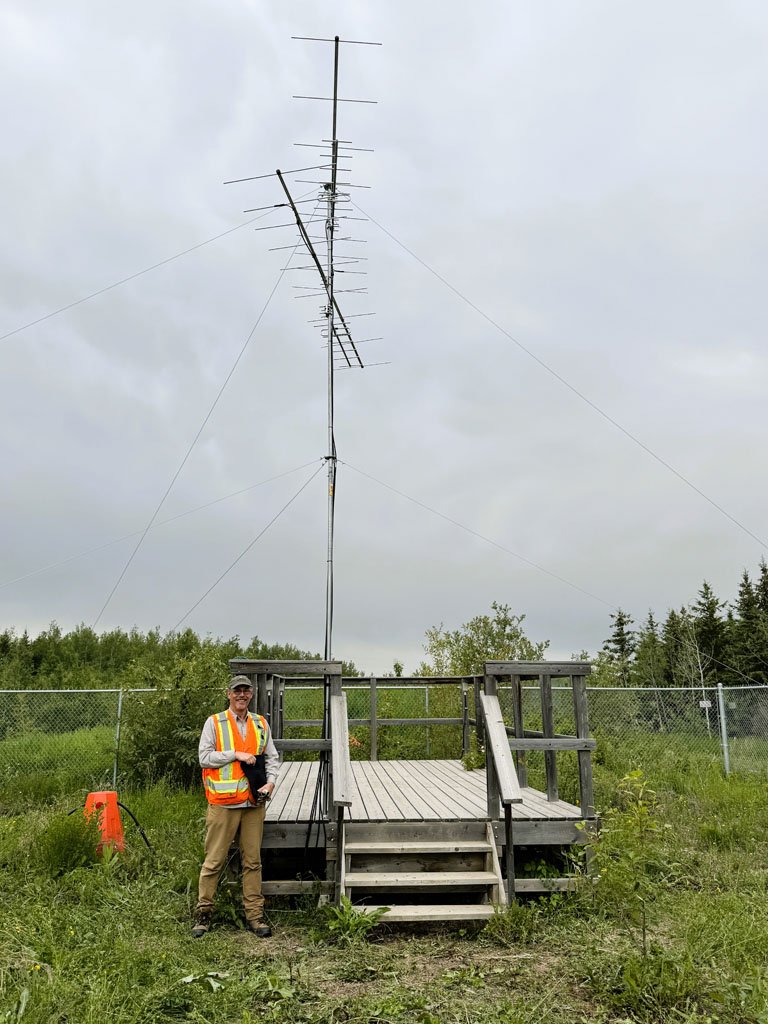Ongoing Project
Telemetry Monitoring - Motus
Motus - Birds Canada
Motus, which is Latin for movement or motion, is a collaborative global program of Birds Canada that uses radio telemetry (tagging) to track flying organisms, primarily birds. The small transmitters that are attached to an organism emit a pre-programmed signal and these signals are picked up by Motus receiving stations on the ground and the data are recorded within the global database. With many Motus receivers now operational, the movement of tagged wildlife can be more precisely tracked than ever before.
"Our long-term vision is to create an east-west electronic fence through which tagged birds would fly during their spring and fall migrations."
The WBWRI has deployed its first Motus receiver and the antennas at a secure location north of Fort McMurray near the oil sands mines. Members are provided with the link and information to access the data collected by our Motus receiver to discover if any tagged birds or other flying organisms are moving through our region.
Our long-term vision is to create an east-west electronic fence through which tagged birds would fly during their spring and fall migrations. Some of the proposed Motus receiver locations are within the range of bird banding stations around Fort McMurray. This overlap offers an excellent opportunity to attach transmitters to birds to address questions about juvenile dispersal, migratory movements, and long-term survival.
Our members will have the opportunity to track our tagged birds, as well as any birds tagged by others that are detected by our Motus station. This is an excellent opportunity for our members to learn about remote sensing technologies and the types of data that are being collected for use in environmental monitoring and research projects.
Opportunities also exist for tagging bat species and to support strategies for conservation of regional bat populations. Bat migration into and out of northeastern Alberta is not well understood. Once a Motus station network is active in the region, we will consider a bat telemetry tracking project as well.
Our ability to deploy additional Motus receiver stations and attach transmitters to birds, and possibly bats, in the Fort McMurray region will be dependent on funding availabiliy.
Project Sponsor


